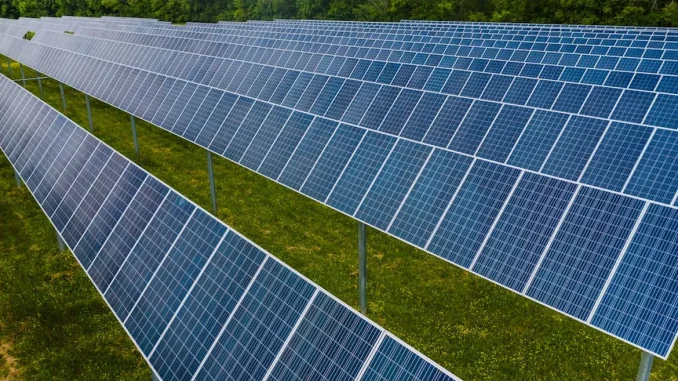
In an era where environmental concerns dominate global discourse, Lindab, a preeminent European ventilation company, has distinguished itself as a leader in the pursuit of sustainable solutions. Their story is one marked by innovation, strategic alliances, and an unwavering dedication to minimising environmental impact. This narrative explores their use of durable and recyclable steel, collaboration with industry partners, and holistic sustainability measures, illustrating a company committed to fostering a healthier, more sustainable future.
Lindab’s emphasis on steel in their ventilation systems is rooted in the material’s inherent qualities—longevity, fire resistance, and recyclability. These attributes have cemented steel as a cornerstone of Lindab’s product offerings, guaranteeing reliability and quality for their customers. However, the environmental footprint of steel production poses a significant challenge. The steel industry accounts for approximately 7% of global CO2 emissions, a daunting figure in the context of climate change. With global steel production projected to increase from 1,950 million tonnes in 2021 to 2,500 million tonnes by 2050, the imperative for more sustainable practices is urgent.
In response, Lindab has proactively aligned with the European Union’s Green Deal, which aims for climate neutrality by 2050. Their guiding principle, “For a better climate,” encapsulates their dual focus on enhancing indoor air quality while addressing broader environmental challenges. Central to this endeavour is their strategic partnership with SSAB, a leading steel manufacturer. In 2021, Lindab and SSAB embarked on a collaborative effort to develop fossil-free steel, a venture that has already borne substantial results.
The partnership with SSAB has culminated in the introduction of Recycled 75 steel, a pioneering material composed of at least 75% recycled content. Manufactured in electric arc furnaces powered by renewable electricity, Recycled 75 steel significantly reduces environmental impact. According to Environmental Product Declaration (EPD) data, utilising this innovative steel for circular and rectangular ducts can decrease climate impact by 62% compared to traditional steel. For instance, a 125 mm circular duct made from Recycled 75 steel can save 2.44 kg CO2e per metre.
Lindab’s emphasis on ducts is a strategic decision, given that approximately 50% of a ventilation system’s climate footprint is attributed to the steel used in these components. By prioritising the use of Recycled 75 steel in ducts, Lindab maximises its positive environmental impact, setting a benchmark for sustainability within the industry.
Nevertheless, Lindab’s commitment to sustainability transcends steel. The company has implemented a comprehensive suite of measures to reduce its overall environmental footprint. These initiatives include optimising energy use in production facilities, investing in renewable energy sources, and enhancing the energy efficiency of their products. Additionally, Lindab has embraced circular economy principles, designing products for easy disassembly and recycling at the end of their lifecycle.
Lindab CEO Anders Berg encapsulates the company’s vision: “Our goal is to create a healthier and more sustainable environment for future generations. The introduction of Recycled 75 steel is a significant milestone in our journey, but it’s just one of many steps we’re taking.”
Lindab’s efforts reflect a broader industry trend towards sustainability. The construction and building sectors increasingly recognise the importance of reducing their carbon footprint. According to the World Green Building Council, buildings account for nearly 40% of global energy-related CO2 emissions. Companies like Lindab play a crucial role in driving the transition to greener practices, underscoring the growing significance of sustainability in the industrial sector.
By concentrating on the use of recycled materials and renewable energy, Lindab is setting a benchmark for others to emulate. The partnership with SSAB is particularly noteworthy, as it highlights the potential of collaboration in achieving environmental objectives. However, the path to climate neutrality is fraught with challenges. While innovations such as Recycled 75 steel are promising, they represent only a fraction of the changes needed across the industry. The scalability of such solutions, along with their economic feasibility, will be critical factors in determining their long-term impact.
Moreover, Lindab’s holistic approach to sustainability demonstrates a comprehensive strategy that could serve as a model for other companies. By addressing multiple facets of their environmental impact, Lindab is not only reducing their carbon footprint but also enhancing their resilience in the face of evolving regulatory and market pressures.
Looking ahead, the future of sustainable ventilation solutions appears promising, yet complex. Technological advancements in material science and renewable energy are likely to play a pivotal role. For instance, the development of even more efficient recycling processes and the integration of smart technologies in ventilation systems could further reduce environmental impacts.
Additionally, regulatory frameworks will continue to evolve. The European Union’s Green Deal, along with other international climate agreements, will drive stricter standards and incentivise innovation. Companies that proactively adapt to these changes will not only contribute to global climate goals but also gain a competitive edge in the market.
Furthermore, consumer awareness and demand for sustainable products are on the rise. As more individuals and organisations prioritise environmental responsibility, companies like Lindab will find increasing opportunities to expand their market share by offering eco-friendly solutions.
While the path to a sustainable future is challenging, the concerted efforts of industry leaders like Lindab offer a glimpse of what is achievable. By embracing innovation, collaboration, and a holistic approach to sustainability, the ventilation industry can make significant strides towards a greener and healthier world. Lindab’s journey is a testament to the power of strategic partnerships and comprehensive sustainability measures in creating a better climate for future generations.


Be the first to comment